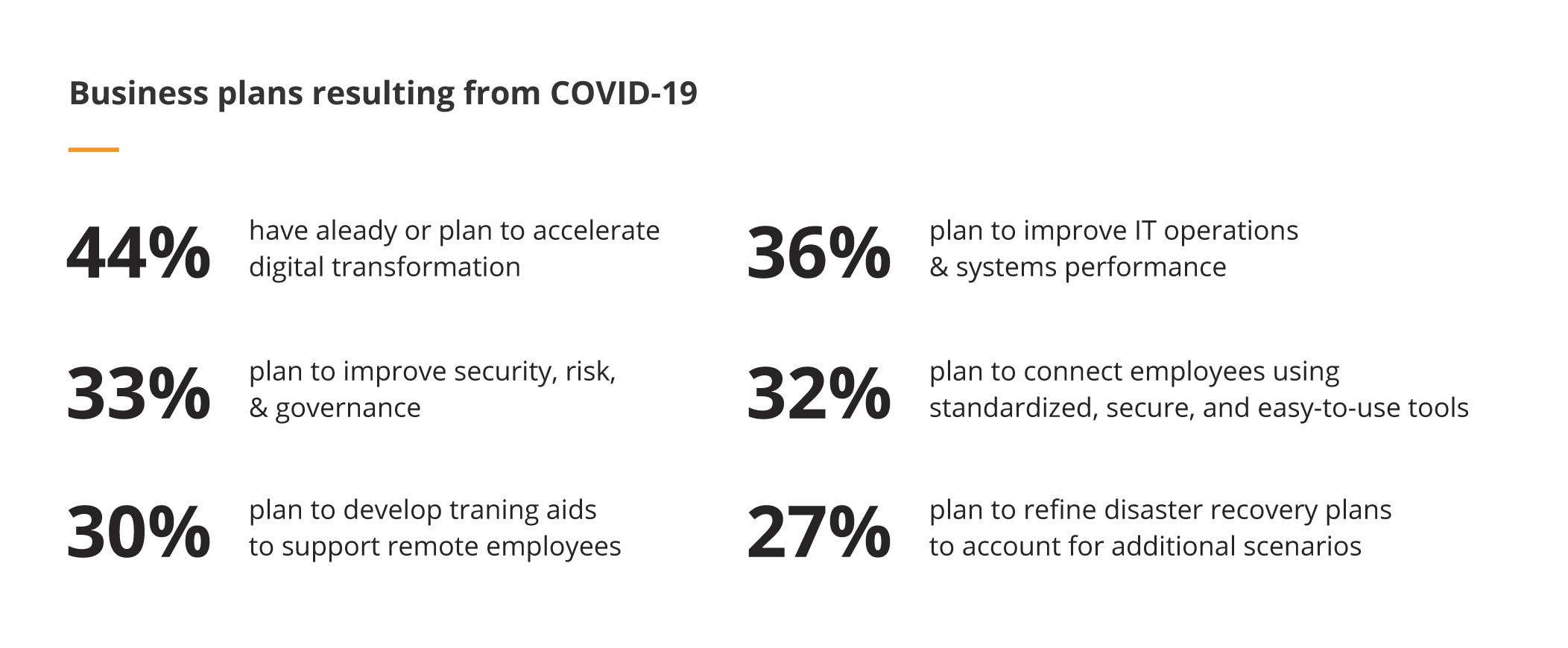
Software Audit: importance, types and benefits
Modern businesses are incredibly software-reliant. To operate, they need countless applications that facilitate everyday tasks. Making sure that their software is on par with industry standards and their competition is vital for companies to succeed.
To make the most out of your systems, you can conduct a software audit to assess the effectiveness, security, and weak points of your internal infrastructure.
What is a software audit? Definition and statistics
Software audit is a broad term. On the one hand, you have internal audits that help with the quality assessment of your systems. On the other, there are external audits that primarily focus on licensing, industry compliance, and legal requirements.
Still, the purpose of various software audits is more or less the same — finding issues that can be improved and making the most of your system. And audit is definitely something that companies are interesting in right now.

Why are software audits performed?
Software audits are conducted to assess software processes and products for compliance with requirements, standards, and contractual agreements. They assist different organisations and software vendors in ensuring software quality, accuracy, and functionality while reducing legal risks and optimising performance efficiency.
Find out how to choose a reliable software vendor:
Twelve Questions to Ask a Potential Software Development Supplier
Guidelines When Choosing a Software Development Partner
How to start a digital partnership with a software development company
Quality assurance
Perhaps the most fundamental reason for software audits is Quality Assurance. Looking into your code can provide you with invaluable insights concerning its further optimisation. This is all done with respect to industry-specific requirements. This can prove to be crucial if you’re thinking about accelerating your digital transformation or system modernisation.
Ensuring that your code and business processes are of sufficient quality is vital for moving forward. QA also takes care of your hardware — memory profiling and processor usage — to confirm that your machines operate at the highest efficiency possible.
Due diligence
Software audits also include due diligence on your current infrastructure and the profitability of modernising it. Conducting due diligence lets you investigate any hidden costs associated with further development and assess the technical debt.
This allows you to get a grip on the risk factor of any subsequent investments. The future maintainability of your architecture and its costs is also an issue often covered in software quality audits.
Security check
Appraising your infrastructure’s cybersecurity is also an integral part of software quality audits. This involves simulated hacker attacks, known as penetration testing, to find holes in your system’s security.
A pentest is often the best way to uncover potential cyber threats since it’s essentially the same as an actual breach or attack. Other security check elements are the Secure Development Lifecycle test, the assessment of risk in third-party components, real-life social engineering, a compliance audit, and a Web Application Security Assessment.
Solutions for potential weak spots
A software quality audit not only pinpoints the issues with your architecture but also provides solutions for the weak spots. A good practice is to let the auditing professionals incorporate the improvements, as they know best what is wrong with your code.
When should you perform a software audit?
The best time to perform a software audit may be when you’re scaling your business up, moving forward with digital transformation, reshaping your system to match the current market conditions and requirements, or you’re simply in need of a new solution. Even if you think that your current solutions work well, there are always things that can be done better.
According to a study by Spiceworks Ziff Davis, as many as 76% of businesses plan on long-term IT infrastructure changes, primarily due to the Covid-19 pandemic.
Moreover, the audit should be done during project onboarding to establish baseline compliance and to understand your existing software assets.Additionally, you should conduct a software audit whenever problems or inconsistencies arise within the project to identify the root cause. Regularly performing routine checks is also important to ensure that you comply with existing standards and regulatory compliance.
Types of software audits
Software audits are categorised based on their primary focus and the specific outcomes they intend to achieve. Understanding the different types is essential as it helps organisations tailor their software audit process to meet specific needs.
Software quality audit
Suppose your business is operating on legacy software. In that case, it is a good idea to conduct a quality audit and define areas that should be improved to guarantee you have access to the highest quality software.
The new technology is constantly emerging, and making sure that your systems are up to date with the latest trends should be an integral part of your strategy.
Such audits let you retain peace of mind about your company’s future. You need a long-term business strategy, and an audit should be one of your priorities if you have an existing infrastructure. Not only do you get an expert opinion about your system’s flaws, but you’re also provided with possible improvements and fixes.
Software security audit
Currently, cybersecurity is a significant concern for many companies. Malicious acts, including data breaches, phishing, and distributed denial of service, are becoming increasingly common. With our world largely based on software, hackers make use of ever-evolving techniques to run cyber attacks.
Security audits are a way of preventing such attacks. By preparing your infrastructure, you’ll be able to mitigate the damage or avoid it altogether.
Now, there are various ways of conducting software testing process:
Real-life social engineering is carried out to assess the chances of a potential attack.
Penetration tests consist of simulated attacks, through which you get to find weak spots, code errors, and configuration issues in your systems.
Web Application Security Assessment helps find flaws stemming from misconfiguration, information leaks, poor authentication methods, inadequate error handling, etc.
The maturity of your Secure Development Lifecycle process assessment lets you maintain a sufficient security level for the apps your team is building.
Compliance verification for industry standards and legal issues like: GDPR, HIPAA, SOX, PCI-DSS.
Third-party application checks to see if they somehow inhibit your infrastructure’s security.
Usability and accessibility audit (UX audit)
Already-deployed software can be subjected to a usability audit to see if there are issues with User Experience. Usually, such audits consist of multiple experts going through an application’s features, looking for potential hindrances and ways to improve user experience on website.
Such audits are necessary to investigate whether your app is comfortable and pleasant to use. There are numerous elements of usability & accessibility audits:
User flow analysis, which consists of going down a potential path of a user and looking for any obstacles, makes sure that the journey is as smooth as possible.
Colour use assessment allows for the correct selection of shades and tints to provide insight into how the users perceive your product.
A cognitive walkthrough looks at the application in terms of completing various tasks.
Heuristic evaluation investigates usability in accordance with pre-established rules called heuristics.
Most usually, third-party companies that offer such audits give the software creators advice on what can be done to fix them.
Benefits from external software audits
The results of a software audit can positively affect a company’s bottom line, productivity, and compliance regulations. Let’s take a look at the many upsides of the software audit process:
Cutting costs in software development process
Software audits are an essential part of effective cost management for any business. They carefully sort through all the software licenses and identify the ones that aren’t being utilised or are redundant, which allows you to cut costs.
Accounting for and correctly licensing all software is more than simply a money-saving exercise; it’s also a company’s best defence against non-compliance’s legal and financial consequences.
Legal compliance is only one of several advantages. Audits of your software’s deployment and usage can help you spot inefficiencies and use that information to make better, more strategic decisions. As a result, operations become more simplified, and operational costs are reduced.
Boosting security and early detection of weaknesses
Software audits are not just about finances; they are also crucial for evaluating the well-being and safety of your software tools.
By identifying vulnerabilities or inefficiencies in the system, they provide a chance to improve security measures and enhance functionality. Based on these insights, you can make decisions to replace, update, or remove software, contributing to a more robust security infrastructure.
Enhancing efficiency and software asset management
If you’re looking to invest in new software, you should undertake a thorough audit first to make sure it will work with your current infrastructure and meet your company’s needs. This foresightful evaluation helps keep resources from being wasted on solutions that look good on the surface but need major adjustments to function well inside the business context.
What to сonsider before auditing software?
Conducting a software audit can be overwhelming, but with proper preparation, organisations can navigate the process efficiently.
First, don’t go through it alone; gather a diverse team to strategise the audit roadmap. You will need the expertise of IT professionals, legal experts, and procurement specialists to understand the fine details of user license agreements and the technical aspects.
Make sure you understand the process. Whether you are facing an internal evaluation or teaming up with third-party auditors, a basic understanding of the audit’s ins and outs can save time and prevent confusion.
How to conduct a software audit: checklist
Now, there are a couple of ways you can approach a software audit. You can either use an in-house QA team to check whether your software is working as intended, or you can outsource the entire process to professionals.
Outsourcing such a service comes with many advantages. You get an independent analysis, and the conclusions that are drawn from such a third-party audit are usually far more in line with reality.
Another benefit to outsourcing is that you may expand your resources whenever you want, which is much more complicated with an internal team.
Understand the scope and gather documentation
Whether the audit focuses on software quality, usability, or something else, it’s important to identify its scope. At the same time, it’s crucial to compile the necessary paperwork, such as purchase orders, license agreements, and logs of user activity. This audit phase lays a firm foundation for the rest of the process, ensuring that all actions are well-informed and purposeful.
Evaluate software usage
The review process considers a wide range of factors, such as the frequency and depth of software use and how well it supports organisational goals. Use established benchmarks or industry standards for evaluating the software’s performance. This phase isn’t only about finding unused assets; it’s also about figuring out whether or not the software is effective and acceptable for how things are currently being done.
Address non-compliance issues
It is possible that the audit will uncover instances of software usage that violate applicable law or contract terms. Spotting these inconsistencies is critical because of the potential for fines and damage to the company’s reputation. Once these trouble spots have been identified, it is only logical to begin fixing them.
Often, corrective actions mean modifying operations or organisational structure to put software usage in line with the agreed terms.
Review software security
Data protection mechanisms, user access controls, and vulnerability assessments are just some of the aspects of software security that will be scrutinised in this process. The goal is to make sure the program can withstand any attacks that could compromise the safety of the company’s data.
Establish ongoing processes
An effective software audit is not a one-and-done task but rather an integral aspect of an organisation’s ongoing dedication to project governance. The long-term compliance, efficiency, and security of software can be maintained if you establish continuous monitoring processes and regular reviews. This consistency is useful for planning software-related investments.
Discuss findings with the audit team
The goal of this conversation should be to share and receive helpful feedback on audit findings. Improvement suggestions, difficulties, and next steps can all be discussed and planned at this time. By taking this final step, you can rest assured that the software auditing process will serve as a catalyst for strategic growth and added value.
Future Processing: software audit partner for organisational growth
Software audits are not only the necessary evil that companies need to conduct at some point. They are also a great opportunity to focus on the current state of your product/software/infrastructure and adjust it to business, legal, security and user requirements.
When their full potential is understood, these audits can be used to promote organisational development, strengthen security, and give businesses an edge over the competition.
Future Processing is the place to go for guidance on your path to continuous improvement and security, so if you want to learn more about making the most of software audits, contact us today.



